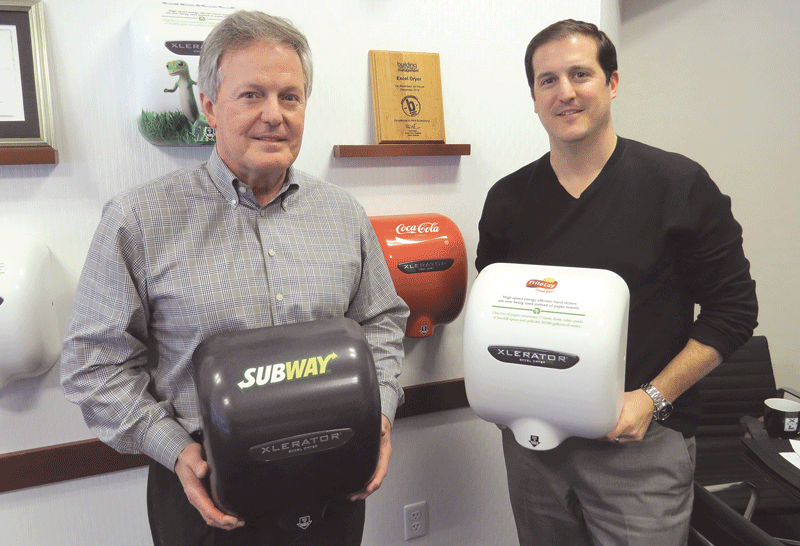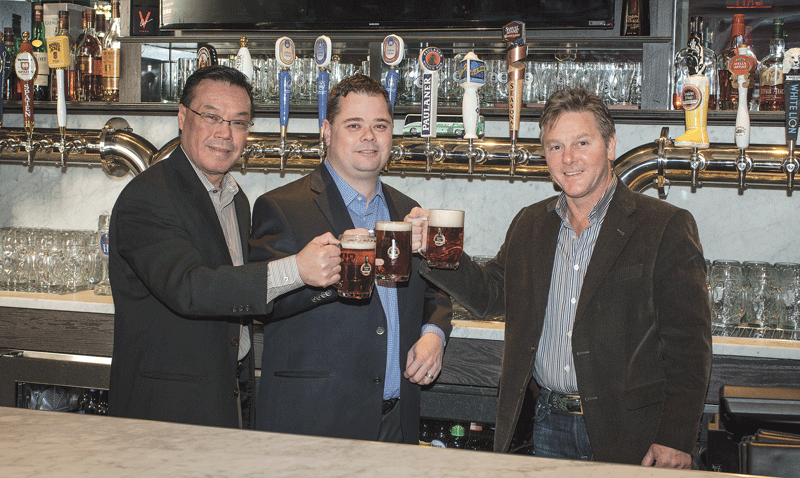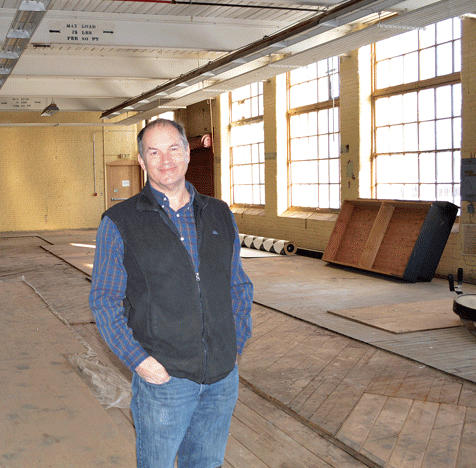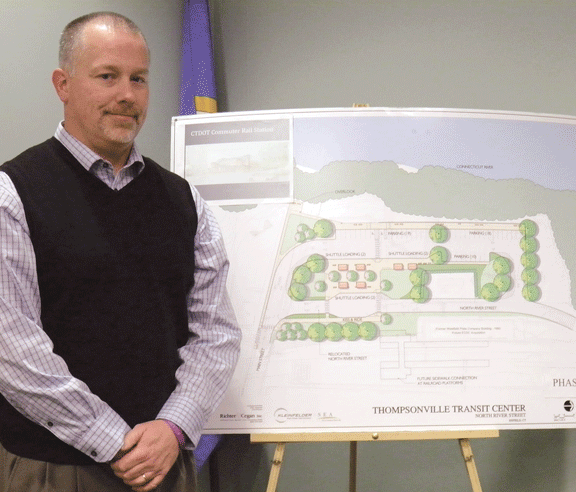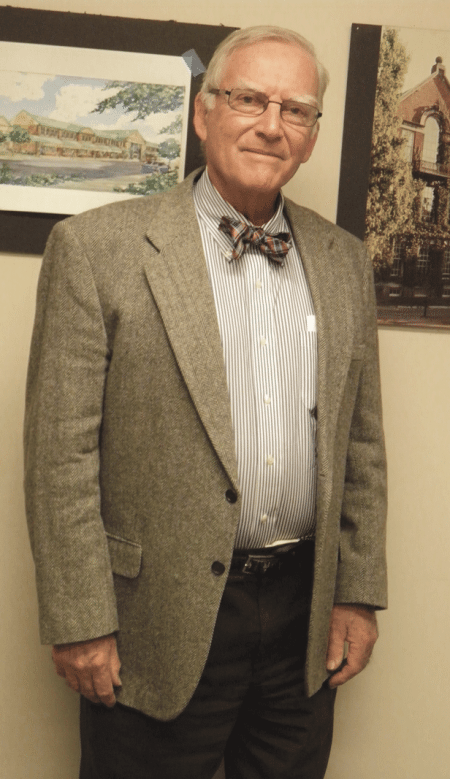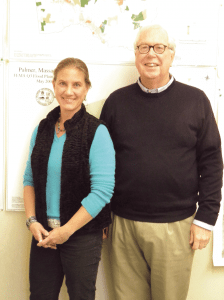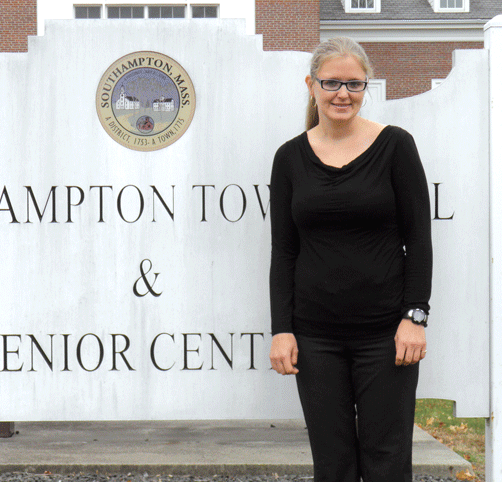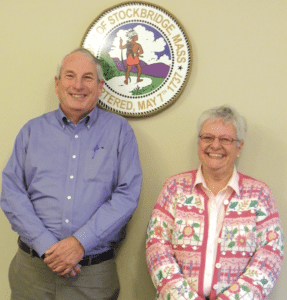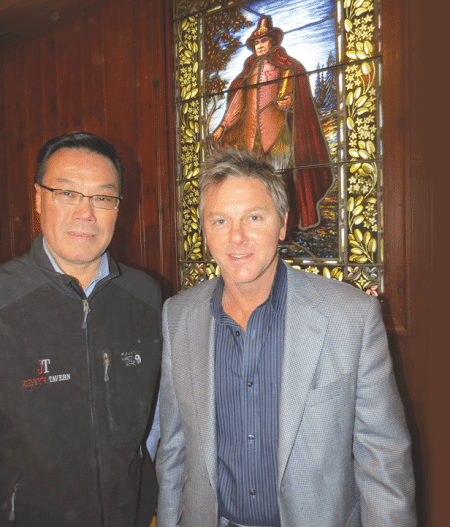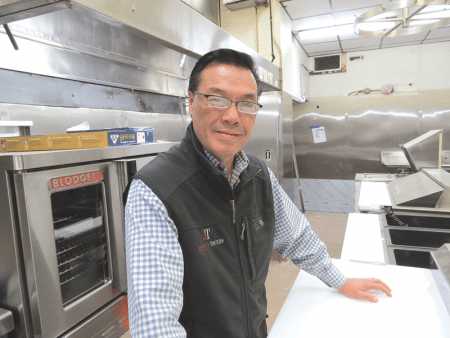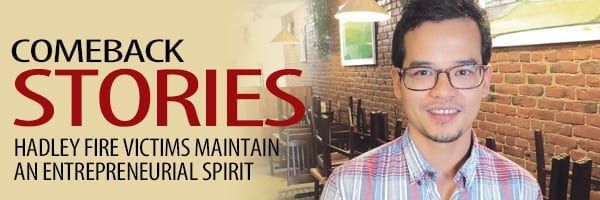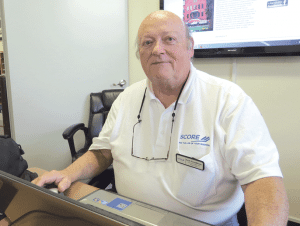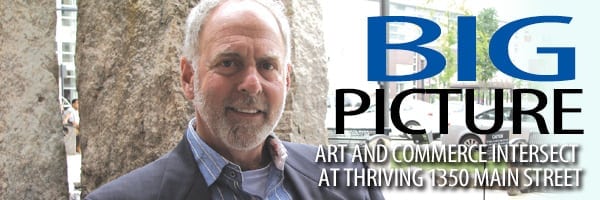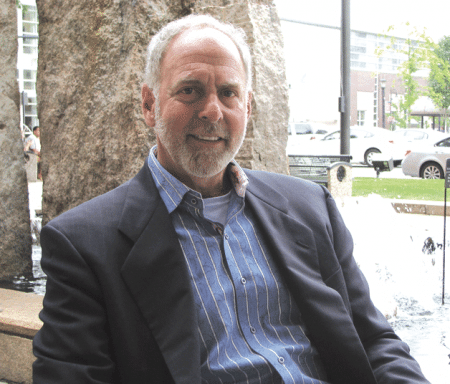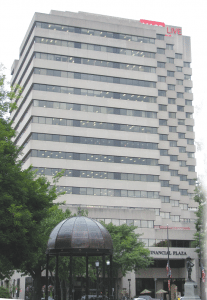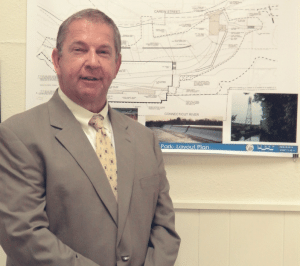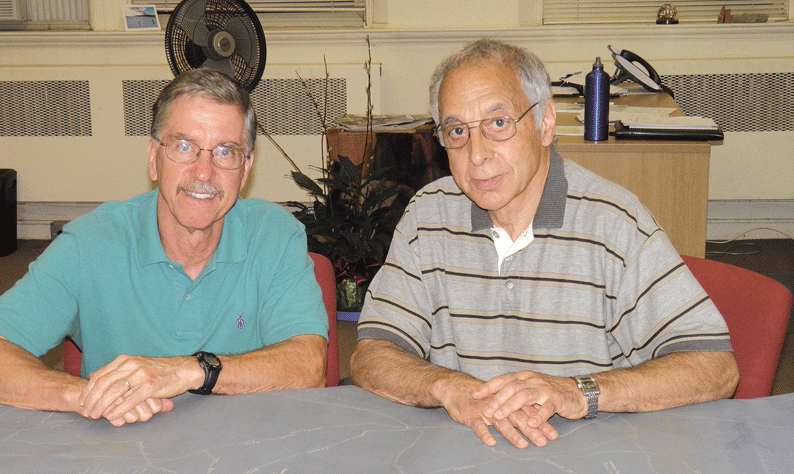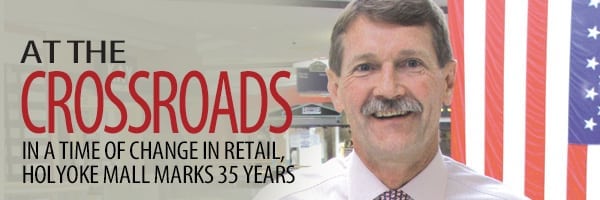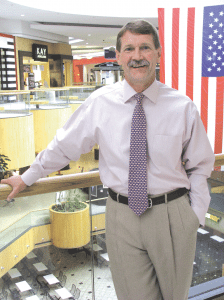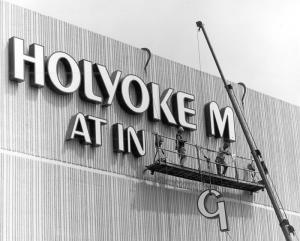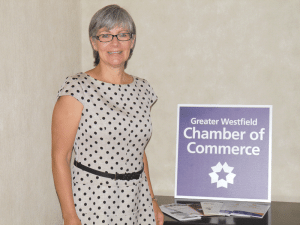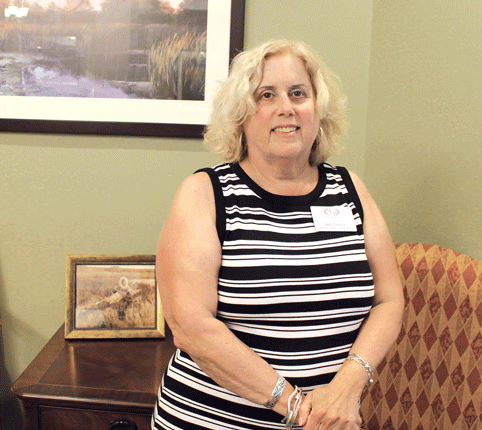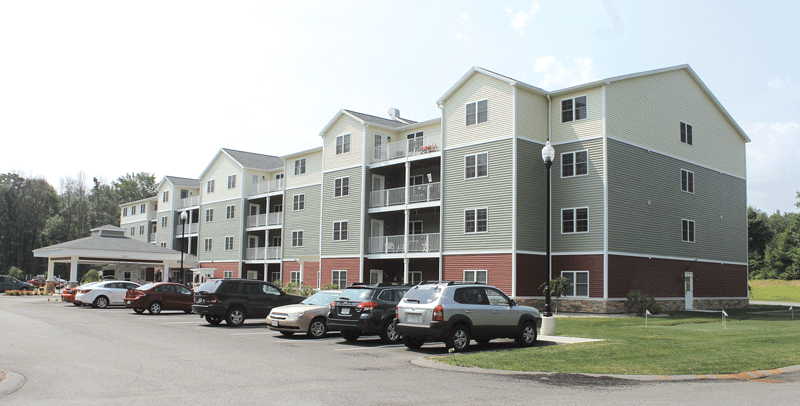Chicopee Officials Take Balanced Path to Growth

From left, Mayor Richard Kos, Carl Dietz, and Lee Pouliet stand near the former Lyman Mill, which a developer plans to turn into 50 market-rate loft apartments.
Rather than focusing strictly on new initiatives, he and other city officials are taking steps to preserve and repair existing infrastructure, while preparing for the future.
“Balance is important. People like to see things that are different, but we also have to take care of what we have,” said Kos, citing a wide variety of projects that will help revitalize the downtown area, promote pride in home ownership, and pave the way for ambitious undertakings on sites once used for military housing, as well as the former Facemate and Uniroyal properties.
Since Kos took office for the second time 14 months ago, one-third of the senior management staff has changed, and new ideas are being generated. “Some positions were vacant, and some became open through attrition and retirement,” he said. “We brought in some new talent, and the people on board are continuing the work that has been done with fresh eyes, new ideas, and skill sets in a seamless manner.”
The effort includes making full use of City Hall and the auditorium on the third floor, which has been closed for years and is now being renovated. The graceful room contains beautiful stained-glass windows, two balconies, and architectural details difficult to replicate today, and Kos hopes that, when repairs to the crumbling plaster are complete, it can be used to televise all meetings of city officials as well as school events and other city functions. “We want to make sure everything we do is accessible to the public; that type of transparency is really good for the city,” he said, explaining that the telecasts will be also be put on the city’s website so people who do not have cable TV subscriptions can view them.
Through a partnership with Mass IT, Chicopee has also become one of the first cities in the state to offer free wi-fi service downtown. “We’re calling it Chi-Fi; it’s an initiative designed to bring people downtown,” Kos said.
Others include more public parking, and last month the Munich Haus restaurant purchased the former, long-abandoned Ferris parking lot on Center Street with help from the city, which included $150,000 in block-grant funding.
“They will make 15 of the 50 parking spaces public and will also create five new full-time positions,” said Carl Dietz, the city’s building commissioner and director of community development.
The city also purchased and demolished an abandoned, multi-family home on Front Street, and the lot will be used to create dozens of additional parking spaces.
Although Kos said a plan to convert the former Cabotville Mill into new housing units is not likely to happen, a developer is pursuing the purchase of the former Lyman Mill property on lower Front Street. “It’s very exciting, as he plans to turn it into 50 market rate, loft-style apartments.”
Lee Pouliot agreed. “The apartments will be built in a way that will allow people to work and live in them,” said the city’s acting planning director.
In addition, an innovative owner-occupied, multi-family grant program will kick off this month in Chicopee Center, Chicopee Falls, and Willimansett to help make properties in those neighborhoods more marketable.
“The city worked with Polish National Credit Union and Chicopee Savings on the program, and we will provide entitlements of up to $16,000 to help people purchase homes,” Kos said, noting that buyers must live in them and will receive $1,000 each year for up to 16 years if they remain in the homes. “We believe this will improve the quality of life; landlords who live in a property they own are more likely to keep it clean and hold tenants responsible for their behavior than absentee landlords,” Kos said, adding that he believes well-maintained homes and pride in ownership are far more effective in improving neighborhoods than additional police patrols and efforts to enforce compliance codes.
Another new project is about to begin in Aldenville. “Wells Fargo foreclosed on a very small, single-family home on 42 Grace St. and offered the city $10,000 to use toward its redevelopment,” Pouliot said. “We expect to demolish it and have students from Chicopee Comprehensive High School build a new home on the site.”
Restoring Vitality
Memorial Drive has been a busy commercial strip for decades, and it continues to add vibrancy. Ground will be broken this spring for a new PetSmart store at Chicopee Crossing that will create 50 new jobs. But even though the 3.7-mile corridor is flourishing, Kos said it is not being ignored.
“Memorial Drive is our major commercial area, and although it continues to grow, we want to see if there are ways to make it better,” the mayor told BusinessWest.
So, last fall, the city contracted with UMass and a group of students in the Architecture and Regional Planning master’s program who called themselves Hill House Planners, to undertake a study of the roadway. They divided it into three sections and examined traffic flow, the vacancy rate, potential redevelopment strategies, and how much space is available for green infrastructure, along with zoning conflict resolution in areas where commercial property abuts residential property.
The study was completed in December, and suggestions include reducing the speed limit, adding new signage and multiple roundabouts, creating a bicycle path (which would be of particular benefit to residents on the South Hadley end of the corridor), and installing new sidewalks on both sides of the street that would improve access to shopping and commercial properties.
Kos said the results of the study are helpful and under consideration. “It’s one more area where we are looking for new ideas,” he told BusinessWest, explaining that the undertaking is in line with his plan to maintain and improve things that work, while addressing problem properties and issues.
The old library building, which has become an eyesore in the city’s center since it was vacated in 2003 when a new library was built, is one of those problem areas. The City Council allocated funding to remove a significant amount of asbestos and lead paint in the interior, and EDM Achitecture has been chosen to examine possibilities for reuse. “It’s just part of what we are doing to remove impediments to progress through preparation,” Kos said.
Progress is also being made on a plan to convert the former Chapin School, located between Meadow and Chicopee streets, into 40 apartments for homeless veterans through the Soldier On program.
“The school has been vacant and unused for 12 years, and this will be great for the neighborhood, as the veterans in the program have a history of taking great pride in their homes,” Dietz said.
In addition, interest in the former Facemate site and the Chicopee River Business Park, located just off Route 291, has escalated over the past year, officials said.
“In the last six or eight months, new companies have leased space both inside and outside of the park, and we are anticipating an active spring,” said Dietz, adding that, in the next few months, the city will put out a request for proposals to redevelop about five acres of land next to the new, $8.2 million RiverMills Center on West Main Street, which was constructed after former Facemate factory buildings were demolished and hazardous waste was removed from the property.
Westover Air Reserve Base has always played a prominent role in the city, and Kos said a plan created to expand its use through partnerships will help it thrive, which is especially important in light of the budgetary cuts the government has been making at military installations across the country.
“The state has allocated $5 million to UMass to lease and transform a vacant building on the base into a National Aeronautics, Research, Development and Training Center, and private investments around or on Westover will also provide jobs,” Kos said, speculating that, at some point, an aviation training program could be established at Chicopee Comprehensive High School that would contribute to jobs within that industry.
Dietz added that Westover Metropolitan Airport Development Corp. is playing an important role in the joint effort to ensure that Westover remains open. The corporation oversees the airport as well as four industrial parks built on land vacated by the military.
“They are partnering with the base to make things more efficient so they can play a larger role in the aircraft-maintenance business,” he said. “As the private side grows, the military is able to reduce its costs.”
The corporation also hopes to develop an unused, 100-acre site near the airport which could attract new businesses related to the aeronautics industry.
Kos said the state has also given the city $1 million to help demolish antiquated Navy housing off of James Street on a 26-acre plot, which Chicopee acquired at no cost in 2011. The plan is to build a 4-megawatt solar farm on the property, leveraging the state grant with an additional $1 million from city coffers.
“The electricity that will be generated should save Westover $100,000 each year and will also save our residents money,” Kos said. “Plus, Westover will receive $900,000 from the state’s military bond bill to do energy-infrastructure work that will make it more efficient.”
Changes are also being made to other properties throughout the city. “We are completing $250,000 in improvements to Wisnowski Park, and the wading pool is being turned into a splash pool, and the City Council appropriated $185,000 to fix structural problems in the administration building on the former Uniroyal-Facemate property,” Pouliet said.
Future Possibilities
The city will continue to seek ways to redevelop unutilized properties, and Kos said officials from the Roman Catholic Diocese of Springfield told him they will consider building a new regional Catholic high school on the former Uniroyal factory site.
“Our city is strong; we have maintained our savings, our growth, and the services we offer, and a lot of our initiatives have received wholehearted support from the City Council and our legislative delegation,” said the mayor. “Chicopee is fortunate to have four representatives and three senators, led by Rep. Joe Wagner, as they have played a monumental role in our success.”
The mayor and other officials have high hopes for downtown and view it as an ideal location for new restaurants and businesses related to the healthcare industry.
“People come from all over Western Mass. to go to the Herbarium for holistic care, and the Munich Haus and Collegian Court have been real successes,” said Kos. “So, we believe the work that will be done on Interstate 91 for the casino will provide an opportunity for new restaurants in a spot with plenty of free parking that lends itself to future growth.”
During his recent State of the City address, he said the last year has been fruitful, but credited it to a team effort. “When I took office, I promised to work to make the city better. And I’m pleased to report that, together, we are doing that.”
Chicopee at a glance
Year Incorporated: 1848
Population: 55,717 (2013)
Area: 23.9 square miles
County: Hampden
Residential Tax Rate: $17.54
Commercial Tax Rate: $31.67
Median Household Income: $46,708 (2010)
Family Household Income: $57,760 (2010)
Type of government: Mayor; City Council
Largest Employers: Westover Air Reserve Base; City of Chicopee: ; J. Polep Distribution Services; Turbo Care Inc.
Latest information available





